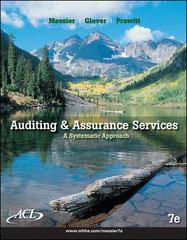

260 Chapter 4 Consolidated Financial Staternents and Intercompany Transactions 57. Comprehensive consolidation subsequent to date of acquisition, AAP computation, g oodwill, any upstream and downstream intercompany inventory profits, downstream intercomp depreciable asset gain-Equity method A parent company acquired 100 percent of the stock of a subsidiary company on Jan $690,000. On this date, the balances of the subsidiary's stockholders' equity accounts were C Stock, $418,600, and Retained Earnings, $45,080. were Common On January 1, 2012, the subsidiary's recorded book values were equal to fair values for al except four: (1) accounts receivable had a book value of $128,800 and a fair value of $115,92 buildings and equipment, net had a book value of $112,700 and a fair value of $170,660, (3) the tomer List intangible asset had a book value of $32,200 and a fair value of $167,440, and (4) notes able had a book value of $69,000 and a fair value of $64,400. Both companies use the FIFO inv method and sell all of their inventories at least once per year. The net balance of accounts receivable are collected in the following year. On the acquisition date, the subsidiary's buildings and eq net had a remaining useful life of 6 years, the Customer List had a remaining useful life of 7 notes payable had a remaining term of 4 years l i tenns 20,(2) pay- inventory On January 1, 2015, the parent sold a building to the subsidiary for $209.300. On this date, the building was carried on the subsidiary's books (net of accumulated depreciation) at $161,000. Both companies estimated that the building has a remaining life of 6 years on the i with no salvage value ntercompany sale date routinely sells merchandise to the other company, with a profit margin of 25 per cent of selling price (regardless of the direction of the sale). During 2016, intercompany sales amount to $48,300, of which $25,760 of merchandise remains in the ending inventory of the parent. On De cember 31, 2016, $12,880 of these intercompany sales remained unpaid. Additionally, the subsidiary's December 31, 2015 inventory includes $38,640 of merchandise purchased in the preceding year from the parent. During 2015, intercompany sales amount to $60,000, and on December 31, 2015, $7,0 these intercompany sales remained unpaid. Following are pre-consolidation financial statements parent and its subsidiary for the year ended December 31, 2016. The parent uses the equity method pre-consolidation investment bookkeeping Parent Subsidiary Parent Subsidiany come statement: Sales Balance sheet: 260 Chapter 4 Consolidated Financial Staternents and Intercompany Transactions 57. Comprehensive consolidation subsequent to date of acquisition, AAP computation, g oodwill, any upstream and downstream intercompany inventory profits, downstream intercomp depreciable asset gain-Equity method A parent company acquired 100 percent of the stock of a subsidiary company on Jan $690,000. On this date, the balances of the subsidiary's stockholders' equity accounts were C Stock, $418,600, and Retained Earnings, $45,080. were Common On January 1, 2012, the subsidiary's recorded book values were equal to fair values for al except four: (1) accounts receivable had a book value of $128,800 and a fair value of $115,92 buildings and equipment, net had a book value of $112,700 and a fair value of $170,660, (3) the tomer List intangible asset had a book value of $32,200 and a fair value of $167,440, and (4) notes able had a book value of $69,000 and a fair value of $64,400. Both companies use the FIFO inv method and sell all of their inventories at least once per year. The net balance of accounts receivable are collected in the following year. On the acquisition date, the subsidiary's buildings and eq net had a remaining useful life of 6 years, the Customer List had a remaining useful life of 7 notes payable had a remaining term of 4 years l i tenns 20,(2) pay- inventory On January 1, 2015, the parent sold a building to the subsidiary for $209.300. On this date, the building was carried on the subsidiary's books (net of accumulated depreciation) at $161,000. Both companies estimated that the building has a remaining life of 6 years on the i with no salvage value ntercompany sale date routinely sells merchandise to the other company, with a profit margin of 25 per cent of selling price (regardless of the direction of the sale). During 2016, intercompany sales amount to $48,300, of which $25,760 of merchandise remains in the ending inventory of the parent. On De cember 31, 2016, $12,880 of these intercompany sales remained unpaid. Additionally, the subsidiary's December 31, 2015 inventory includes $38,640 of merchandise purchased in the preceding year from the parent. During 2015, intercompany sales amount to $60,000, and on December 31, 2015, $7,0 these intercompany sales remained unpaid. Following are pre-consolidation financial statements parent and its subsidiary for the year ended December 31, 2016. The parent uses the equity method pre-consolidation investment bookkeeping Parent Subsidiary Parent Subsidiany come statement: Sales Balance sheet








